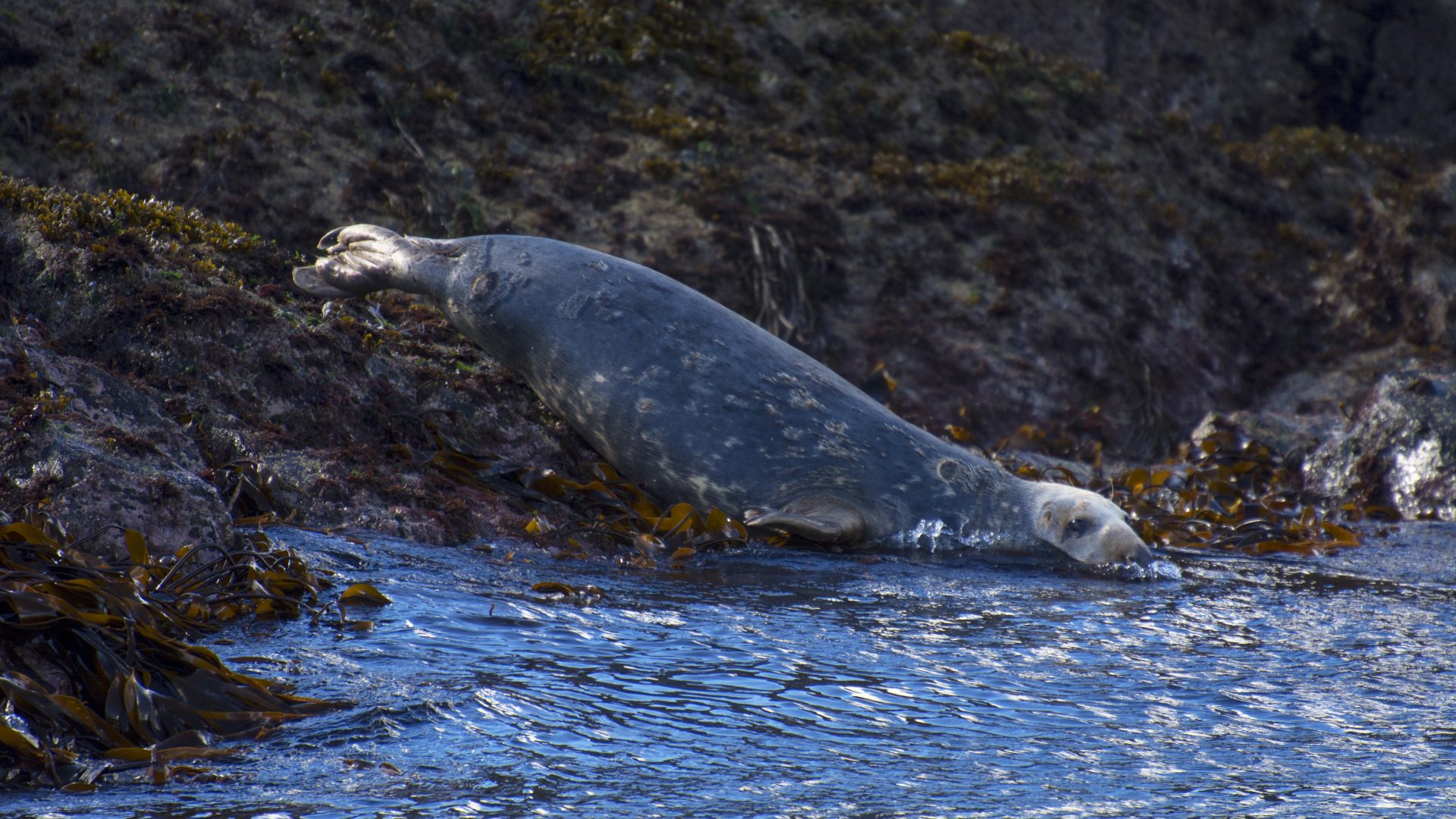
Watching wildlife in the Pembrokeshire Coast National Park
Published: 30 July 2018
The sea around Pembrokeshire is one of the best places in Europe for marine wildlife. Part of the coastline is a European Marine Site, called the Pembrokeshire Marine Special Area of Conservation (SAC). SAC Officer Sue Burton offers some tips on some of the wild and wonderful creatures you might spot in these protected waters.
Grey seals – These can be seen around the whole coast year-round, feeding or snoozing (‘bottling’) in the water, or basking on rocks exposed by the tide. Pups are born August to October and the Deer Park at Marloes, Ramsey Island and quiet bays in North Pembrokeshire are good places to see them.
Jellyfish – The harmless moon jellyfish with four pinkish rings in its bell is the most commonly seen. The impressive barrel jellyfish often gets washed up on beaches. Jellyfish are most numerous in spring and summer. Some do sting, even when dead, so try to avoid touching them (especially the tentacles).
Otters – There is only one species of otter in the UK and in Pembrokeshire, as in Scotland, they love to be in the sea where they eat mostly fish and crabs. Your best chance of spotting one is at Bosherston Lily Ponds, or you could try Nolton Haven or Broad Haven north.
Sunfish – They are likely our weirdest ocean visitor, occasionally seen, mostly offshore, and identified by their flopping dorsal fin. They can reach over 3m in diameter and ‘fly’ like a Frisbee.
Turtle – Turtles feed on jellyfish and are most likely to be seen in Carmarthen Bay. You are very lucky indeed if you see one.
Cetaceans – Small dark porpoise can regularly be spotted in tidal races, e.g. between the mainland and Skomer and Ramsey Islands (look for overhead feeding birds such as gannets feeding at the same time). Common dolphins (with distinctive pale hourglass-shaped marking) are the most likely to be seen close to shore, but the larger Risso’s and Bottlenose are possible too.
Famous fish fact!
A rare blue marlin fish that washed up on Freshwater East beach in 2016 is now on display alongside ‘Drippy’, aka Hope, the huge blue whale skeleton in London’s Natural History Museum!
Find out more and watch videos about Pembrokeshire Marine SAC wildlife here: www.pembrokeshiremarinesac.org.uk.

